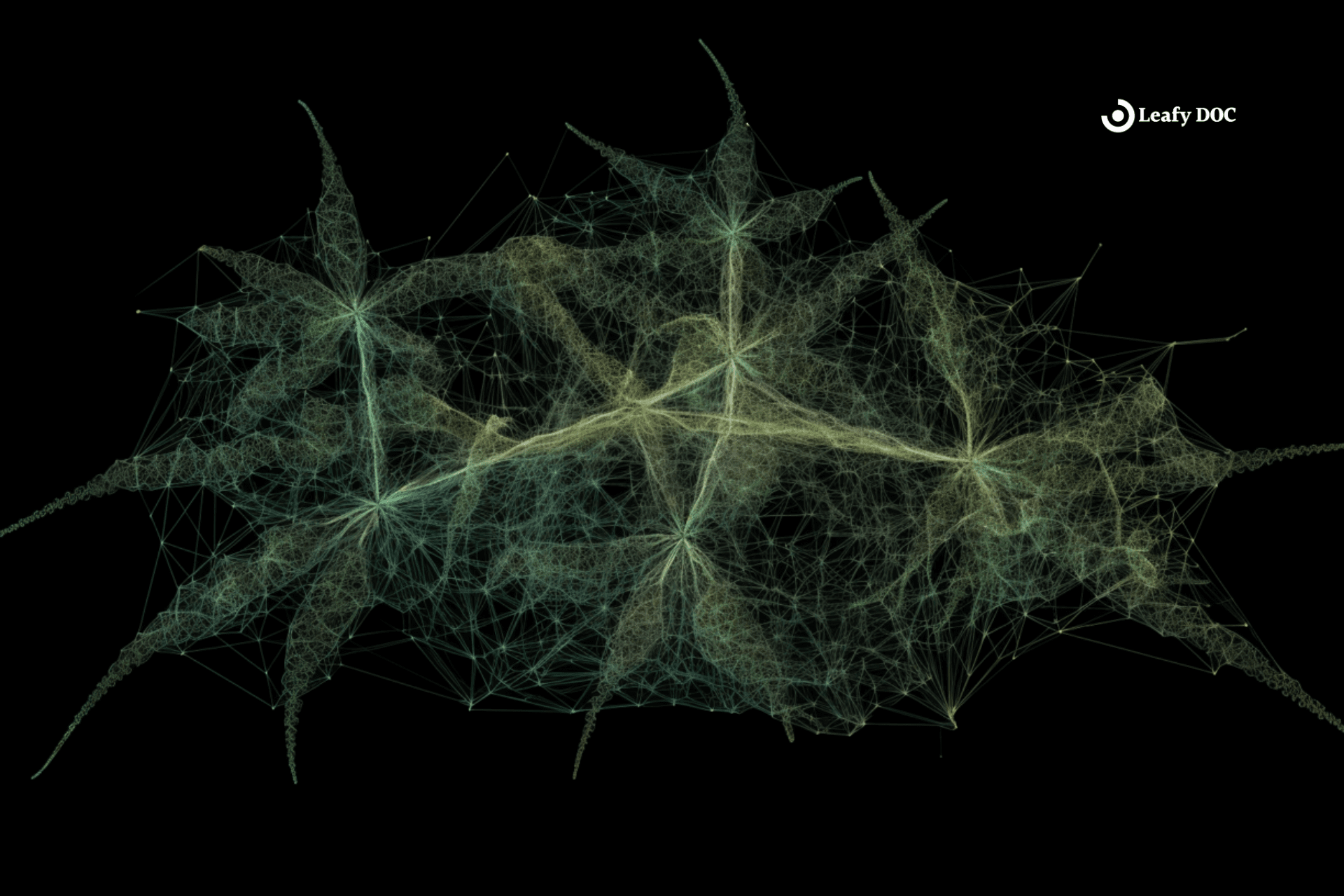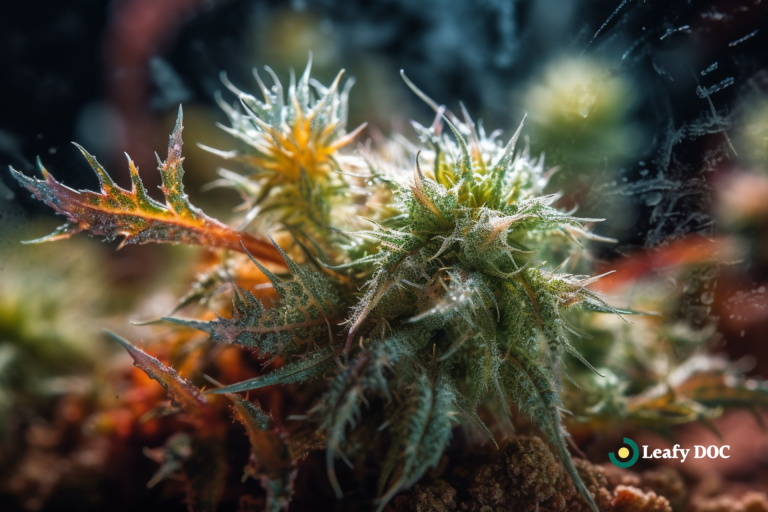Unveiling The Secret Language of Weed Nodes
by Haley Mills · August 17, 2023
Explore the hidden language of cannabis with this eye-opening article. Learn why weed nodes are crucial and unlock the secrets of this fascinating plant.

Have you ever wondered about the hidden language of cannabis cultivation? In the world of growing weed, a secret code exists that can unlock your plants’ full potential and lead to optimal yields. This code revolves around the often overlooked yet crucial cannabis nodes, those mysterious bumps or points on the plant stems that hold the key to understanding its growth and development.
These nodes are more than bumps on a stem – they are the language of the plant, whispering vital information about its sex, flowering stage, cloning potential, and even temperature fluctuations. By unraveling the mysteries of these nodes, growers can tap into a wealth of knowledge and ensure their cannabis plants thrive in the most ideal conditions.
It’s like discovering a hidden underground society that holds the key to freedom and abundance. So, let’s delve into the secret language of cannabis and explore the importance of weed nodes.
Key Takeaways
- Nodes play a crucial role in identifying the sex of cannabis plants, with females having white pistils and males having pollen sacs.
- Nodes provide valuable information about the flowering stage and development of buds, helping growers adjust lighting and nutrient schedules for optimal bud production.
- The distance between nodes, known as internode distance, is a key indicator of overall plant health and strength, with shorter internodes indicating stronger branches.
- Techniques like topping can enhance node development and growth, leading to well-developed nodes and a sturdy plant structure.
What are weed nodes?
Weed nodes, also known as cannabis nodes, are the bumps or points on plant stems that play a crucial role in identifying plant sex, flowering stage, cloning, and temperature fluctuations. These nodes act as indicators, providing valuable information about the plant’s growth and development.
For instance, female plants have white pistils on their nodes, while male plants have pollen sacs. This makes it easier for growers to identify the sex of their plants and determine which ones are suitable for breeding or producing buds.
In addition to identifying plant sex, weed nodes also give insight into the flowering stage of the plant. As the plant progresses through its growth cycle, the nodes will indicate whether it is in the vegetative or flowering stages. This is important for growers, as it helps them understand when to adjust their lighting and nutrient schedules to optimize bud production.
Furthermore, weed nodes are essential in the process of cloning plants. By clipping plants above the third or fourth node, growers can create new plants with identical genetics to the parent plant. This technique is commonly used to produce high-quality and consistent strains.
Lastly, the distance between nodes, known as internodes, is crucial in determining the overall health and strength of the plant. Excessive distance between nodes can indicate weak branches and stems, which may lead to a less robust plant. Conversely, shorter internodes typically result in stronger branches and stems, allowing the plant to support larger buds.
Overall, weed nodes are like the secret language of cannabis. They provide growers with vital information about plant sex, flowering stage, and overall plant health. By understanding the importance of these nodes, growers can optimize their cultivation practices and produce higher-quality cannabis.
Significance of weed nodes
Understanding the significance of nodes is crucial for identifying plant sex, tracking the flowering stage, and determining the health of cannabis plants.
Nodes act as key indicators for various aspects of a plant’s life cycle and overall well-being. By examining the nodes, growers can determine the sex of the plant, as female plants have white pistils on their nodes while male plants have pollen sacs. This information is essential for growers who want to ensure that they are cultivating only female plants, as female plants are the ones that produce the desired buds.
Additionally, nodes play a vital role in tracking the flowering stage of cannabis plants. As the plant transitions from the vegetative stage to the flowering stage, the nodes undergo noticeable changes. The appearance of flowers and the development of buds can be observed on the nodes, providing a clear indication of the plant’s progress. By closely monitoring the nodes, growers can determine the optimal time for harvesting, ensuring that the plants are harvested at their peak potency and flavor.
Furthermore, the health and development of cannabis plants are heavily influenced by the nodes. Excessive distance between nodes can indicate weak branches and stems, making the plant more susceptible to damage and breakage. On the other hand, well-developed nodes contribute to a sturdy and robust plant structure. To optimize node development, growers employ various techniques. Topping, for example, involves cutting off the top of the plant above a certain node, which promotes the growth of new branches and leads to increased node development. By implementing these techniques, growers can ensure that their cannabis plants have strong and healthy nodes, ultimately resulting in higher yields and better quality buds.
In conclusion, understanding the significance of nodes is essential for successful cannabis cultivation. From identifying plant sex to tracking the flowering stage and ensuring plant health, nodes serve as a valuable tool for growers. By optimizing node development through techniques like topping, growers can enhance the overall growth and yield of their cannabis plants.
So, the next time you find yourself examining the nodes of a cannabis plant, remember the important role they play in the secret language of cannabis.
Differentiating indica and sativa nodes
Differentiating between indica and sativa nodes can be done by observing the length of the internodes and the presence of buds along the branch length.
The node structure and growth patterns of indica and sativa plants differ significantly, allowing experienced growers to distinguish between the two easily.
Indica plants typically have shorter internodes, meaning that the distance between nodes is shorter compared to sativa plants. This results in a more compact and bushy appearance.
On the other hand, sativa plants have longer internodes, causing the distance between nodes to be more spread out. As a result, sativas tend to have a taller and more elongated structure.
In addition to internode length, the presence of buds along the branch length can also help differentiate between indica and sativa nodes.
Indica plants tend to have dense and compact buds that grow closer to the nodes. This gives the plant a fuller and more robust appearance.
In contrast, sativa plants have buds that grow along the entire length of the branches, resulting in a more elongated and less dense appearance.
These distinct node structures and growth patterns are important to understand for cannabis growers, as they can affect various aspects of cultivation, such as yield and overall plant health.
Conclusion
In conclusion, understanding the secret language of cannabis nodes is essential for any cannabis grower looking to maximize their plant’s potential.
Weed nodes hold valuable information about plant sex, flowering stage, cloning potential, and temperature fluctuations. By paying attention to these tiny bumps or points on plant stems, growers can make informed decisions about cultivation techniques and ensure optimal yields.
Whether it’s differentiating indica and sativa nodes or deciphering the signs of a healthy plant, mastering the language of cannabis nodes is the key to unlocking success in the world of cannabis cultivation.
So, don’t overlook these features and dive into the fascinating world of cannabis nodes to take your growing game to the next level.
Last Updated: August 8, 2024
Get Approved for Your Medical Marijuana Card in Minutes!

Get Your Medical Card
Connect with a licensed physician online in minutes

Like This Article?
Share with your friends
Table of Contents
Keep Reading
-
Exploring Different Medical Marijuana Strains For Enhanced Patient Access
Find the perfect medical marijuana strain for your needs and unlock enhanced patient access. Experience the benefits of different strains today – click now!
-
Examining The Physical Effects Of Medical Marijuana Use
Unveiling the Eye-Opening Physical Effects of Medical Marijuana Use. Get ready to be amazed by its impact on your body. Click here to explore!
-
How to Travel on a Plane with Medical Marijuana: A Step-by-Step Guide
Learn if you can travel on a plane with medical marijuanas and understand the legal guidelines.



